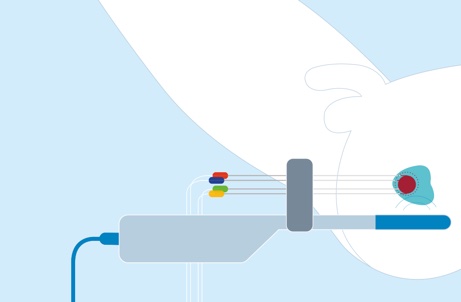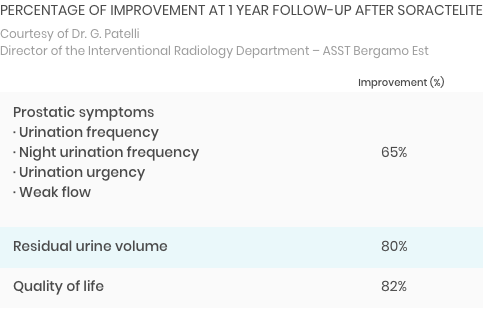SoracteLite TPLA
The new non-surgical laser treatment for Benign Prostatic HyperplasiaSoracteLite
The new non-surgical laser treatment for Benign Prostatic HyperplasiaWhat is SoracteLite TPLATM?
SoracteLite TPLATM is an innovative and micro-invasive treatment for BPH. It is a non-surgical procedure which, by exploiting laser energy, obtains a significant reduction in the volume of the prostate consequently freeing up the urethral channel from the compressive processes that obstruct normal urinary flow. This ensures a gradual resolution of symptoms and progressive improvement in the quality of life for the patient, who will urinate less frequently with a more powerful flow, while the number of night-time urinations is reduced or eliminated, and the risk of urinary tract infections decreases.
SoracteLite TPLATM is an alternative treatment to surgery and other mini-invasive techniques that use a transurethral approach. It differs from these by the treatment methods (in-situ thermal ablation without tissue removal), absence of complications involving the urethra, reduced hospitalisation (day hospital procedure), and rapid recovery of the patient (few hours after treatment).
The micro-invasiveness and safety of the treatment are guaranteed by the following aspects:
- Type of approach: SoracteLite TPLATM is the only treatment that uses a transperineal approach (Transperineal Laser Ablation TPLATM), with the insertion of very thin needles to reach the area to be treated, thus avoiding traumatic interactions with the last section of the urinary tract (urethra and bladder) and the complications often associated with the transurethral approach.
- No prostate tissue removal: laser energy is applied directly inside the prostate, causing a coagulation of the tissue which, being naturally reabsorbed by the gland, causes a volumetric reduction, thus preserving its anatomy and functionality.
- Non-surgical treatment: it drastically reduces the complications related to surgery such as bleeding, infections, impotence and retrograde ejaculation, and it also makes it possible to treat patients suffering from coagulation disorders who are on anticoagulant therapy that cannot be suspended or modified.
- No general or loco-regional (spinal) anaesthesia: the SoracteLite TPLATM treatment is performed under local anaesthesia, thus avoiding the risks associated with anaesthetic procedures.
SoracteLite TPLATMis an innovative treatment, still not widely used, although rapidly expanding in Italy and abroad. SoracteLite TPLATM is often compared to other treatments using laser technology (and that are better-known as they have been on the market for several years), such as green laser, thulium or holmium laser. These are all treatments which, unlike SoracteLite TPLATM, involve an invasive and destructive surgical approach to the organ.
How it works


